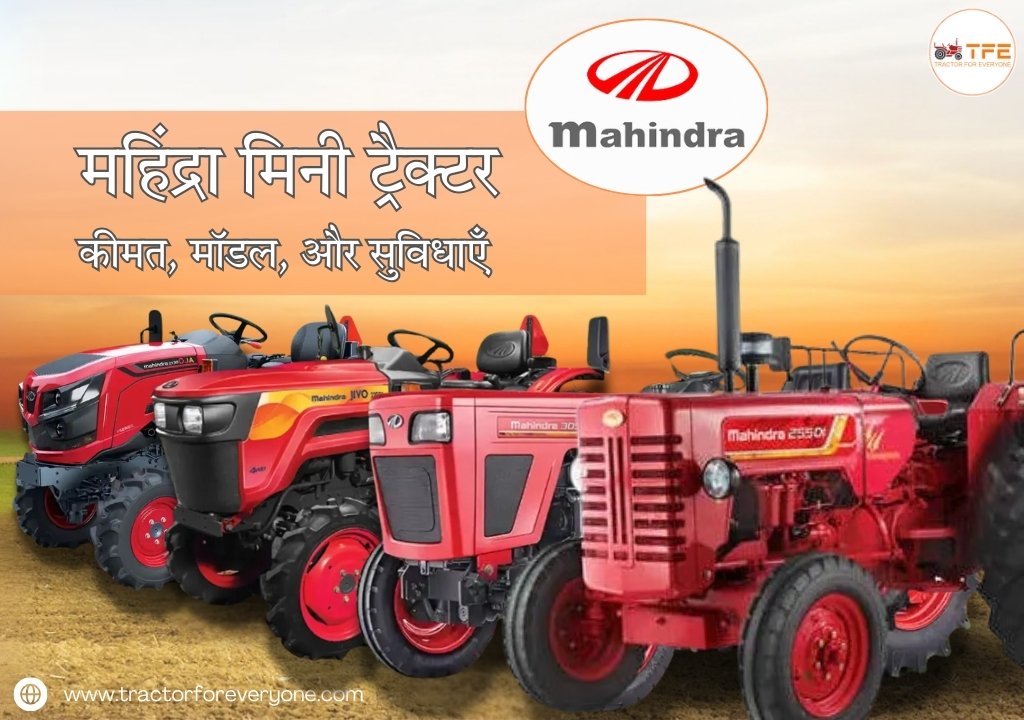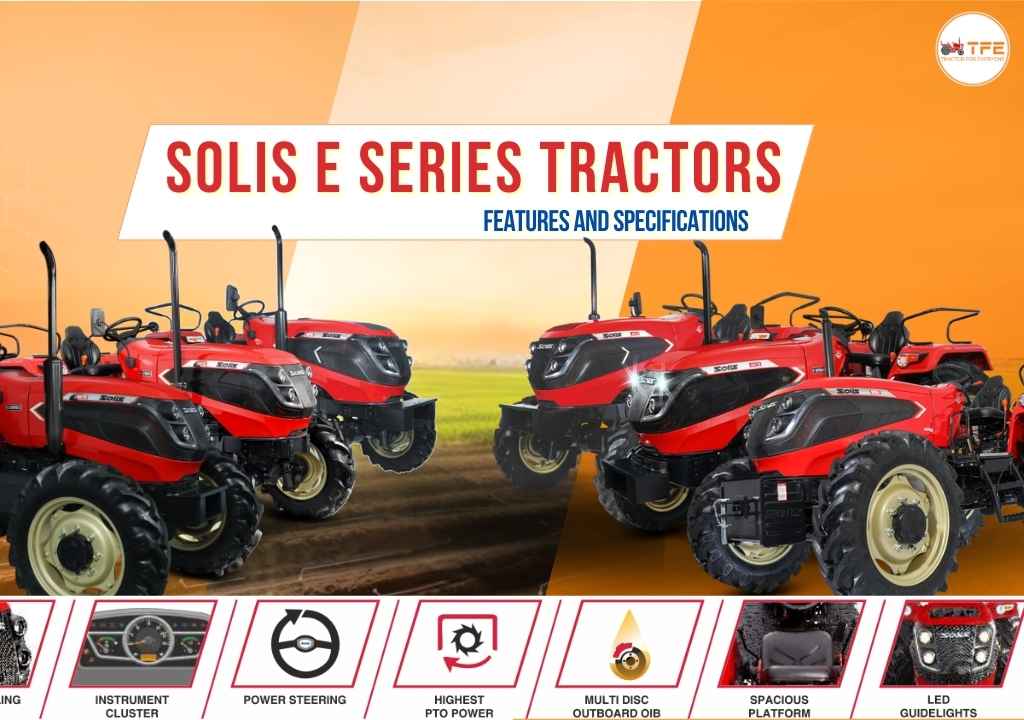Best Used Car, Services, Auto Parts, Rent Car Available for Buy and Sell Near By Go Ahead
- Swaraj Price 2025: Latest Swaraj Tractor Price List and On-Road Rates in India
- महिंद्रा मिनी ट्रैक्टर - कीमत, मॉडल, और सुविधाएँ
- Best Tractors in India 2025: Top 10 Picks for Every Farm Size
- Swaraj 855 FE Tractor Review 2025 Features, Price and Performance Explained
- महाराष्ट्र फार्मर आयडी: ऑनलाइन नोंदणी प्रक्रिया, कागदपत्रे आणि फायदे
- Sonalika Tractor Price 2025 Complete List of Models, Series and Latest Offers
- Swaraj Tractor Price List 2025: Best Tractors for Small, Medium & Large Farms
- Swaraj 744 FE Price, Features & On-Road Cost Explained for 2025
- Mahindra Tractors Price 2025: Complete List, Series-Wise Comparison and Best Models
- New Holland 3630 TX Super Plus+ Tractor Review 2025: Features, Price and Performance

Complete Guide to 12V Water Pumps: Uses Types Features and Benefits
When it comes to reliable and efficient water pumping for small-scale or off-grid applications, 12V water pumps are a popular and powerful solution. Whether it's for a car’s cooling system, garden irrigation, or solar-powered water lifting, these pumps are compact, energy-efficient, and easy to use.
In this blog, we’ll explore the various types of 12 volt DC water pumps, their specifications, key features, and how they benefit farmers, gardeners, and homeowners alike.
What is a 12V Water Pump?
A 12 volt water pump is a DC-powered electric motor pump that operates using a 12V direct current supply, such as a car battery, marine battery, truck battery, or even a solar panel. These pumps work using centrifugal force, created by a rapidly spinning impeller that moves water or other liquids through the pump system.
The pump controller connects directly to the battery using a 2.3-meter (7.5 ft) cable with clip connectors, ensuring fast and easy installation.
Common Applications of 12V DC Water Pumps
12V pumps are used in:
- Agriculture: Pesticide sprayers, field irrigation, water transfer from tanks or canals.
- Automotive Systems: Circulating coolant in engines or hot water systems, windshield washing.
- Gardening & Home Use: Solar fountains, garden showers, fish tanks, water circulation.
- Solar Pumping Solutions: Ideal for off-grid water lifting from ponds, open wells, borewells.
- Aquaculture & Fish Farming: Maintaining oxygen levels and clean water in fish tanks.
Types of 12V Water Pumps
- Booster & Circulation Pumps
Used to boost water pressure or circulate fluid within a closed system, such as in solar heaters or computer cooling systems.
- DC Submersible Water Pumps
These are fully submerged in water and are designed to push water upwards, instead of pulling it like surface pumps. They are simple to operate and don’t need high-voltage electricity.
Advantages:
- Safer in water
- Efficient operation
- Ideal for groundwater and tank lifting
- Solar-Powered Submersible Pumps
These pumps are powered by electricity generated from solar PV panels. The solar panels charge the system, which then powers the pump motor to lift water from sources like:
- Borewells
- Ponds
- Canals
- Tanks
Installation Tip: Always check that the solar panels are exposed to direct sunlight and adjust them to avoid shade. Also, inspect connections between panel, controller, and pump if there's a performance issue.
Also Read: The Role of Variable Rate Technology (VRT) in Modern Farm Equipment
12V Water Pump Specifications
When choosing a 12V DC water pump, it’s important to understand the technical specifications to ensure that the pump fits your intended application—whether that’s for agriculture, automotive use, or solar-powered systems. Each specification impacts how the pump performs and what kind of tasks it can handle. Below are the key specifications explained in detail:
- Voltage (V)
The voltage rating of a pump indicates the type of electrical power it requires. A 12V water pump is designed to run on 12 volts of direct current (DC), which is commonly available from car batteries, solar panels, or portable power stations. It’s crucial to match the pump's voltage with your power source. Using a different voltage could damage the motor or reduce performance.
- Current (Amperes or A)
The current draw refers to how many amperes the pump consumes during operation. A typical 12V water pump may draw anywhere from 3 to 7.5 amps, depending on the size and power of the motor. Higher current draw often means more power but also requires a stronger power source or battery capacity to support longer run times without overheating or voltage drop.
- Power Consumption (Watts or W)
This is the amount of power the pump uses, calculated by multiplying voltage by current (Watts = Volts × Amps). For example, a 12V pump drawing 5 amps uses 60 watts. Power ratings generally range between 36W to 100W for compact 12V pumps. Knowing the wattage helps you size your battery and solar panel correctly, ensuring efficient energy use.
- Flow Rate (Liters/Minute or LPM)
The flow rate measures how much liquid the pump can move per unit of time, usually in liters per minute (LPM) or gallons per minute (GPM). A common 12V pump may deliver between 10 to 50 LPM, depending on the model. For spraying or irrigation purposes, higher flow rates are ideal to cover larger areas quickly. For small fountain setups or aquariums, lower flow is sufficient.
- Head Pressure / Lift Height (Meters or Feet)
This is one of the most critical specifications. Head pressure, also called lift height, indicates the maximum vertical height the pump can lift water. For 12V models, this is usually 3 to 4 meters. Higher voltage pumps (24V, 48V, or 60V) can lift water up to 12 meters or more. It's important to match the lift height to your setup, especially if you’re pumping water uphill or into a tank at a height.
- Pump Type (Submersible or Surface)
12V pumps come in various types:
- Submersible pumps are placed underwater and push water upward. Ideal for wells, tanks, and ponds.
- Surface or inline pumps are placed outside the fluid source and pull water from it. These are useful for car radiators, garden hoses, or recirculation systems.
- Material Composition
The materials used in the pump body and impeller affect its durability and chemical compatibility. Common materials include:
- Plastic (ABS or PVC) – Lightweight and corrosion-resistant, good for clean water.
- Stainless Steel – Strong, corrosion-resistant, and ideal for agricultural or chemical use.
- Brass or Aluminum – Durable but may corrode with certain fluids.
Choose a material based on the type of liquid you plan to pump—water, oil, coolant, etc.
- Inlet/Outlet Size
These sizes, measured in inches or millimeters, determine what kind of pipes or hoses can be connected. Most 12V pumps have inlet/outlet sizes between ½ inch to 1 inch. This affects how fast water can enter and exit the pump and also impacts flow rate.
- Operating Temperature
Every pump has a safe temperature range. For most 12V pumps, the range is 0°C to 60°C (32°F to 140°F). Some pumps are built for hot water applications, while others are not. Always check if your application—like car heaters or solar water heaters—requires high-temperature tolerance.
- Duty Cycle / Run Time
Some 12V pumps are designed for continuous operation, while others can only run for a limited time before needing a break (intermittent duty). Overrunning a pump with a short duty cycle can cause overheating or motor burnout. Always check if the pump supports your expected run duration.
- Noise Level
If you're using the pump in indoor or quiet environments like aquariums or home fountains, low-noise pumps are preferred. Many 12V pumps operate between 35 to 55 decibels (dB), making them quieter than typical household appliances.
- Dimensions & Weight
Compact size and portability are advantages of 12V pumps. They are often small enough to fit in tight spaces and light enough to carry anywhere. Always check the product dimensions if you're installing the pump in an enclosed or space-constrained area.
- Certifications & Warranty
Look for pumps that carry certifications like UL, CE, or BIS, indicating safety and quality standards compliance. A warranty (usually between 6 months to 2 years) protects you from manufacturing defects and ensures long-term reliability.
Why Choose a 12V DC Pump?
- Battery-Friendly: Can run on standard 12V batteries, no need for AC mains.
- Solar Compatible: Works well with small solar panel setups, ideal for rural areas.
- Affordable & Durable: Low upfront cost, long lifespan with proper maintenance.
- Multi-Purpose: Use in agriculture, aquaculture, gardens, mobile units, and more.
- Eco-Friendly: Especially when used with solar panels, reduces carbon footprint.
How DC Water Pumps Work: A Step-by-Step Guide
DC water pumps are compact, energy-efficient devices used to move liquids like water, oil, or coolant. They are especially popular in agricultural, automotive, and solar-powered applications due to their simple design and low power requirements. Here’s a detailed explanation of how a 12V DC water pump works, broken down step-by-step:
- Power Supply Connection
The first step in operating a DC pump is providing a suitable power source. A 12V DC water pump is designed to work with a 12-volt direct current supply, commonly from a car battery, solar panel system, or portable power pack. When the pump is connected properly, the electrical energy becomes available to activate the internal motor.
In solar-powered systems, solar panels convert sunlight into electrical energy, which is then used to run the pump directly or stored in a battery for later use.
- Motor Activation
Once the pump is connected to a power source and switched on, electric current flows into the motor. This motor is the heart of the pump. It converts electrical energy into mechanical motion. The DC motor has a simple, brush-based or brushless design that makes it efficient and easy to control.
- Impeller Rotation
As the motor receives power, it starts spinning an impeller mounted on the motor shaft. The impeller is a disc with curved blades that spins at a high speed inside the pump housing. The design of the impeller is critical—it helps generate the necessary force to move water by creating a spinning motion that builds energy within the fluid.
- Water Movement by Centrifugal Force
When the impeller spins, it uses centrifugal force to fling water outward from the center to the outer edges of the impeller chamber. This creates a low-pressure zone in the center, causing more water to rush in, while the high-speed spinning action builds momentum and forces the liquid out through the pump outlet. This is how the flow of water is created in a DC pump.
The faster the impeller spins, the stronger the flow and the more water the pump can move. This mechanism makes DC pumps ideal for applications requiring consistent and reliable fluid movement.
- Diffuser Action – Lifting the Water
After the water is pushed outward by the impeller, it enters a diffuser—a specially designed part of the pump that slows the fluid down while increasing pressure. This process converts the kinetic energy (speed) of the water into pressure energy, allowing the pump to lift the water to the desired height. This is especially useful when water needs to be moved to elevated tanks, gardens, or through long piping systems.
The lift height or head pressure of the pump depends on how well this process is optimized in the pump design. In a 12V model, this could be between 3 to 4 meters, whereas higher-voltage pumps can lift water much higher.
Power Usage Calculaion
To understand how much power your pump is using, simply multiply the voltage by the current.
- For instance, a pump drawing 5 amps at 12 volts will consume 60 watts (12V × 5A = 60W).
- If the pump draws 7.5 amps, it will consume 90 watts (12V × 7.5A = 90W).
It's important to choose a battery or solar panel that can support this load during the intended operating hours.
Troubleshooting Tips for Solar Pumps
If your 12V solar water pump stops working suddenly, check a few things:
- Make sure the solar panel is receiving full sunlight. Adjust its angle and remove any shading.
- Check all wiring connections for any loose ends or corrosion.
- Inspect the battery charge level (if connected).
- Look for any clogs in the pump inlet or impeller housing.
- Ensure the controller or fuse hasn’t failed.
12V Brushed DC Motors
These are the more traditional type and are commonly used in:
- Automotive applications (wipers, fans, seat adjusters)
- Water pumps
- DIY electronics
- Toys and hobby models
- Low-cost agricultural sprayers
They’re easy to control, affordable, and work well with simple 12V power sources like car batteries or small solar panels.
12V Brushless DC Motors (12V BLDC)
These motors are more efficient, durable, and maintenance-free because they don’t use brushes. They’re used in:
- Electric bikes and scooters
- Solar-powered water pumps
- Medical devices
- Cooling systems
- Portable air compressors
- Automation tools and robotics
BLDC motors usually require an electronic controller to operate but deliver better performance and lifespan.
Which One Should You Choose?
Choose a 12V Brushed DC motor if you need a low-cost, easy-to-use solution for basic tasks.
Top 12V DC Motor Manufacturers in India
India has a strong base of electric motor manufacturers, including a wide range of companies producing 12V DC motors for various uses like automotive, agriculture, robotics, and industrial automation. These motors are available in both brushed and brushless (BLDC) versions, catering to different application needs across sectors.
Brushed DC Motor Manufacturers in India
Brushed DC motors are widely used for applications that require simple speed control and consistent torque. Here are some of the leading companies manufacturing brushed DC motors in India:
- Dynaflux PMDC Motor: Known for its focus on automotive applications, Dynaflux produces compact and reliable permanent magnet DC (PMDC) motors, including 12V models.
- Kirloskar Electric: A household name in the Indian electric motor industry, Kirloskar offers a diverse portfolio of DC motors, including those suited for 12V operations across industrial and vehicle-based systems.
- Crompton Greaves: With a long-standing reputation in electric machinery, Crompton provides DC motor solutions for both industrial and light-duty applications.
- Siemens India: A global leader with a strong Indian presence, Siemens manufactures high-performance DC motors suitable for automation and heavy-duty equipment.
- ABB India: ABB is known for its wide range of DC motors, offering both compact and industrial-grade solutions, including models that operate on 12 volts.
Brushless DC (BLDC) Motor Manufacturers in India
BLDC motors are growing in popularity due to their energy efficiency, low maintenance, and quiet operation. These are ideal for modern applications like EVs, drones, automation systems, and smart appliances. Some of the key manufacturers include:
- Bharat Bijlee: A trusted name in the electrical equipment space, Bharat Bijlee manufactures BLDC motors that are widely used in various energy-efficient solutions.
- Schneider Electric India: Known globally for its innovation in energy and automation, Schneider Electric also offers a selection of BLDC motors for advanced control systems.
- ABB India: In addition to their brushed motor offerings, ABB is also recognized for supplying BLDC motors used in robotics, automated systems, and industrial equipment.
- Oriental Motor (India) Ltd.: Specializes in compact and precise BLDC motors, ideal for applications requiring accuracy and low noise.
- Marathon Electric India (formerly GE Motors): Offers Electronically Commutated Motors (ECM), a type of BLDC motor especially suited for HVAC systems and ventilation applications.
- Bharath Electric Motor: An emerging name, this company is building a reputation for quality BLDC motors backed by strong customer support and after-sales service.
- Twirl Motor: While more globally focused, Twirl supplies miniature geared motors, including BLDC types, commonly used in precision-driven applications like medical devices and automation kits.
- Power Electric: A global company that also ranks among the top producers of brushed DC motors—while not based in India, it remains a popular choice for imported 12V motor solutions in Indian markets.
Conclusion
A 12V water pump is a cost-effective, portable, and highly versatile solution for water movement in a wide range of situations – from agriculture to home gardens, fish tanks to solar pumping setups. Whether you need a booster pump, submersible pump, or a solar-powered solution, the 12V category offers durable, efficient options tailored for low-power environments.
If you're looking for a small water pump with big performance, the 12V model is hard to beat.
Frequenly Asked Questions (FAQs):
1. Can I use a 12V pump directly with a car battery?
Ans:- Yes, it can be connected directly using clip connectors, but ensure the battery is fully charged and can support the pump’s amperage.
2. What is the best solar panel size for a 12V pump?
Ans:- A 100W solar panel is typically suitable for most 12V pumps drawing up to 7.5A.
3. How long can a 12V water pump run on solar?
Ans:- It depends on solar intensity, panel size, and battery backup. With optimal sunl ight, it can run several hours daily.
4. What happens if the pump stops suddenly?
Ans:- Sunlight exposure, loose wires, fuse, or battery voltage. Also, inspect if the pump is clogged.
5. Can I use a 12V pump for hot water?
Ans:- Only if the pump is rated for hot water use. Check operating temperature range in the specs.
-
 Post By Marc Rochefort 25/10/2025
Post By Marc Rochefort 25/10/2025Question: Do some or all 12v pumps have a built in pressure switch to turn on and off when a faucet is opened or closed? Or will I need a pressure switch and tank?
Write a Comment
Popular Blogs View All
-

Swaraj Price 2025: Latest Swaraj Tractor Price List and On-Road Rates in India
07/24/2025, POSTED BY ADMIN -

महिंद्रा मिनी ट्रैक्टर - कीमत, मॉडल, और सुविधाएँ
02/18/2025, POSTED BY ADMIN -

Best Tractors in India 2025: Top 10 Picks for Every Farm Size
05/29/2025, POSTED BY ADMIN
Popular Video View All
-

महाराष्ट्रात Second Hand Tractors ची उत्तम संधी! तुमच्या बजेटमध्ये, विश्वासार्ह ट्रॅक्टर मिळवा!
12/16/2025, POSTED BY ADMIN -

TFE Reaper Machine Working | Full Multi-Crop Cutting Process!
12/16/2025, POSTED BY ADMIN -

5 Things You Need to Know Before Buying a Solis E Series Tractor
05/17/2025, POSTED BY ADMIN

